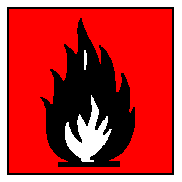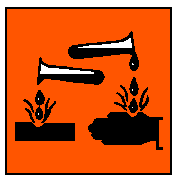International Chemical Safety Cards
| ACETYL CHLORIDE | ICSC: 0210 |
ACETYL CHLORIDE |
 |
 |
| TYPES OF HAZARD/ EXPOSURE |
ACUTE HAZARDS/ SYMPTOMS |
PREVENTION | FIRST AID/ FIRE FIGHTING |
| FIRE | Highly flammable. Many reactions
may cause fire or explosion. Gives off irritating or toxic fumes (or gases) in a fire. |
NO open flames, NO sparks, and
NO smoking. NO contact with hot surfaces. |
Powder, carbon dioxide. NO
hydrous agents. NO water. |
| EXPLOSION | Vapour/air mixtures are
explosive. |
Closed system, ventilation,
explosion-proof electrical equipment and lighting. Prevent build-up of electrostatic
charges (e.g., by grounding). Do NOT use compressed air for filling, discharging, or
handling. Use non-sparking handtools. |
In case of fire: cool drums,
etc., by spraying with water but avoid contact of the substance with water. |
| EXPOSURE | |
AVOID ALL CONTACT! |
IN ALL CASES CONSULT A DOCTOR! |
| INHALATION | Burning sensation. Cough.
Shortness of breath. Sore throat. |
Breathing protection. Closed
system and ventilation. |
Fresh air, rest. Half-upright
position. Artificial respiration if indicated. Refer for medical attention. |
| SKIN | Dry skin. Redness. Serious skin
burns. Burning sensation. Pain. Blisters. |
Protective gloves. Protective
clothing. |
Remove contaminated clothes.
Rinse skin with plenty of water or shower. Refer for medical attention. |
| EYES | Redness. Pain. Severe deep
burns. |
Safety spectacles, face shield,
or eye protection in combination with breathing protection. |
First rinse with plenty of water
for several minutes (remove contact lenses if easily possible), then take to a doctor. |
| INGESTION | Abdominal pain. Burning
sensation. Cough. Shortness of breath. Sore throat (further see Inhalation). |
Do not eat, drink, or smoke
during work. |
Rinse mouth. Do NOT induce
vomiting. Give nothing to drink. Refer for medical attention. |
| SPILLAGE DISPOSAL | STORAGE | PACKAGING & LABELLING | ||
| Evacuate danger area! Consult an
expert! Collect leaking liquid in sealable containers. Absorb remaining liquid in sand or
inert absorbent and remove to safe place. Do NOT wash away into sewer (extra personal
protection: complete protective clothing including self-contained breathing apparatus). |
Fireproof. Separated from
incompatible materials (see Chemical Dangers). Dry. Well closed. |
Airtight. Unbreakable packaging;
put breakable packaging into closed unbreakable container. F symbol C symbol R: 11-14-34 S: 9-16-26-45 UN Hazard Class: 3 UN Subsidiary Risks: 8 UN Packing Group: II |
||
| SEE IMPORTANT INFORMATION ON BACK | ||||
|
||||